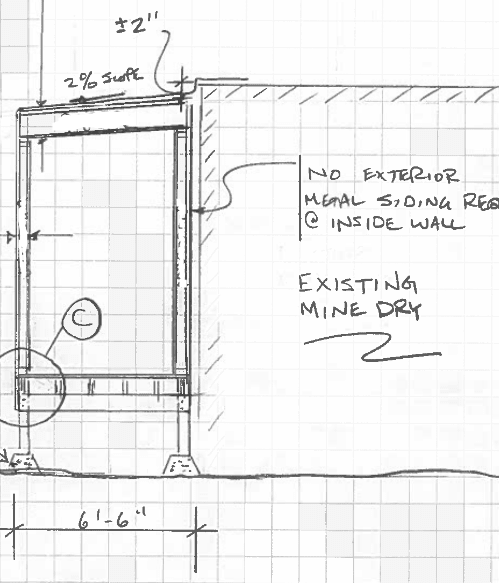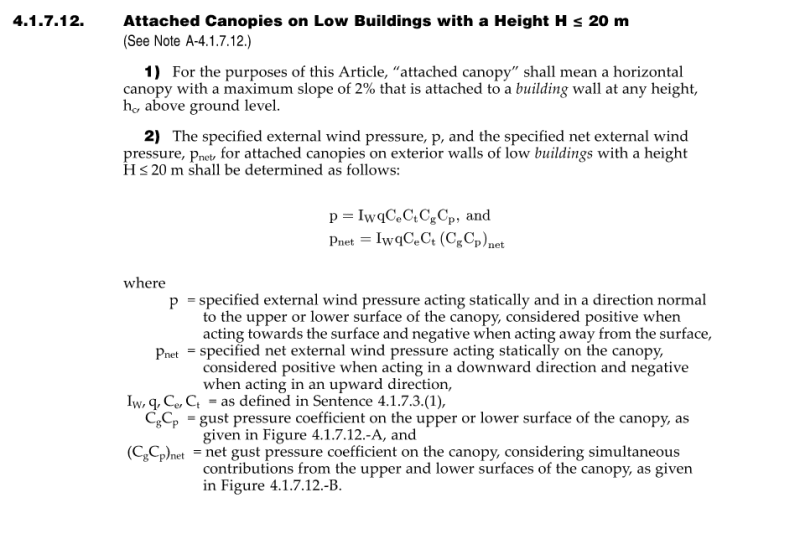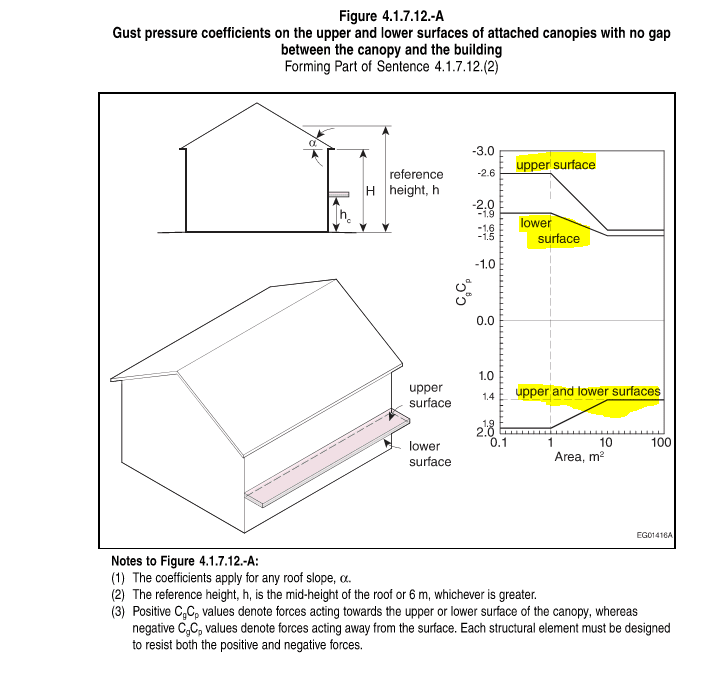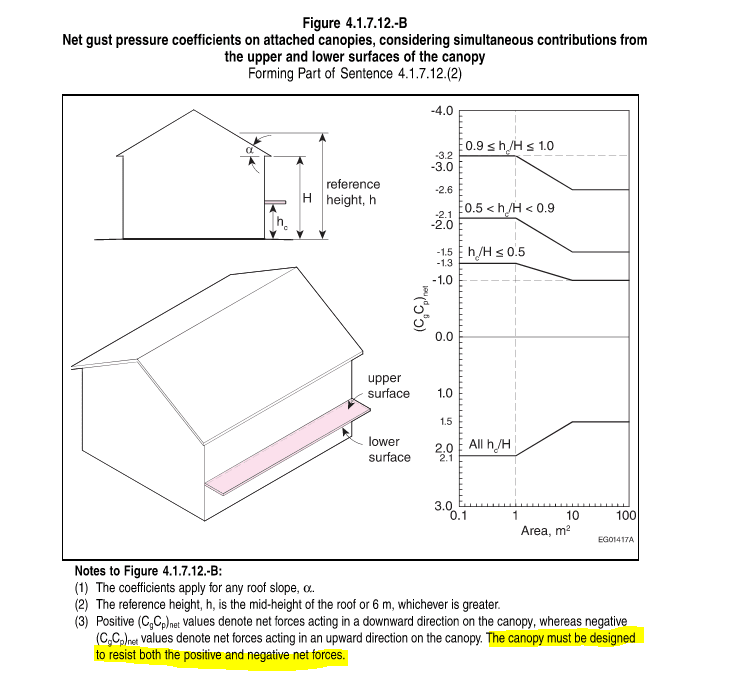canstruct12
Structural
Hello Canadian Engineers, I am designing a covered breezeway (roof and 4' high plywood barrier) adjacent to an existing building, there is no gap between the breezeway and the building. As well they are similar heights, as the breezeway roof will be ~2" lower than the building roof and sloped 2% to shed water.

I am using "NBCC 2020 CL 4.1.7.12 - Attached Canopies on Low Buildings with a Height H ≤ 20 m" as this is the most applicable reference I was able to find in the NBCC, as the roof slope does not exceed 2% and there will be no gap between the breezeway and the building.



I am uncertain how to apply the loads for CpCg values provided in Figure 4.1.7.12 A.
Figure 4.1.7.12 A shows that there will be forces acting upward and downward, on both the upper and lower surfaces. I am wondering if this is intended to be 4 separate load cases, i.e.
(1)Upward Force on Upper Surface
(2)Downward Force on Upper Surface
(3)Upward Force on Lower Surface
(4)Downward Force on Lower Surface
Any guidance or explanation would be helpful.

I am using "NBCC 2020 CL 4.1.7.12 - Attached Canopies on Low Buildings with a Height H ≤ 20 m" as this is the most applicable reference I was able to find in the NBCC, as the roof slope does not exceed 2% and there will be no gap between the breezeway and the building.



I am uncertain how to apply the loads for CpCg values provided in Figure 4.1.7.12 A.
Figure 4.1.7.12 A shows that there will be forces acting upward and downward, on both the upper and lower surfaces. I am wondering if this is intended to be 4 separate load cases, i.e.
(1)Upward Force on Upper Surface
(2)Downward Force on Upper Surface
(3)Upward Force on Lower Surface
(4)Downward Force on Lower Surface
Any guidance or explanation would be helpful.
